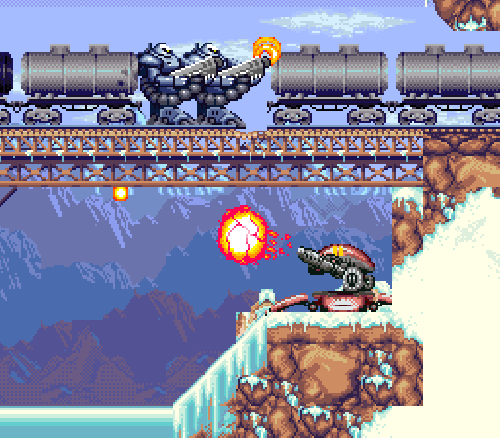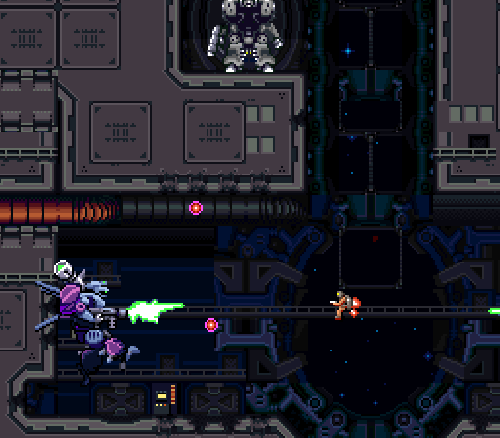Metal Warriors walked a difficult path. Fresh off the cult favorite
Zombies Ate My Neighbors, developers Dean Sharpe and Mike Ebert conceived
Metal Warriors as their homage to mecha anime like
Mobile Suit Gundam and
Armored Trooper Votoms. LucasArts greenlit the idea, and the project went through bug-testing and development with surprising ease.
The problem came in getting the game to market. LucasArts initially struck a publishing deal with Nintendo, who discarded the game and countless other Super NES titles as new systems emerged in early 1995. Konami scooped it up for a mid-1995 release, but the production run was a mere 50,000 copies, and it was soon lost in the utter chaos of a year where multiple new consoles launched and the established ones saw their strongest libraries ever.

Metal Warriors inevitably provoked comparisons to
Cybernator and the rest of the
Assault Suits series. They’re both tales of robot warfare wages in space and on the earth, with semi-realistic mecha that clank and lumber just as much as they jet around with rocket packs or swing beam sabers (or lightsabers, as we can probably call them without fear of LucasArts suing themselves).
Metal Warriors casts its player-named character, Stone by default, as the linchpin in a struggle against the dictator Venkar Amon and his Dark Axis Forces. No benevolent leader would name his army the Axis, so there’s plenty of fearsome opposition in the enemy mecha and their pilots.
Yet Metal Warriors shrugs away all ripoff accusations. In an interview from the second Untold History of Japanese Game Creators, Sharpe and Ebert reveal that they were inspired more by Blaster Master and the freedom it gave players in letting them exit a vehicle at will. Metal Warriors does the same, and Stone can eject from any mecha at any time, equipped only with a jetpack and a dinky firearm that damages only other tiny, robot-less humans. It turns Metal Warriors into less of a straightforward action game and more of a giant puzzle, as you’re driven to leave your protective mock-Gundanium frame several times in each stage. Or you can just see how far you can survive in puny pilot form. True freedom is often suicidal.

The designers didn’t stick to routine robots, either. Artist Harrison Fong devised an inventive roster of half a dozen different mecha. The Nitro and the Havoc are standard humanoid types, rushing and jetting and firing much like an Assault Suits machine, but it’s hard to find stock anime equivalents for the rest of the lineup. There’s Prometheus, a plodding bipedal tank that makes up for its slow pace and lack of jumping by sporting a flamethrower, mines, a shield, and cannons that let player control just when a shell fragments. There’s the Ballistic, which moves by rolling into a ball, charging up and smashing into things, though it can only fire when stationary. There’s the Drache, a flying ship with a dive attacks and eight-way gunfire. And there’s the Spider, which does the best it can by crawling on any surface and immobilizing enemies. It’s okay, Spider. You’re still an essential part of the game.


